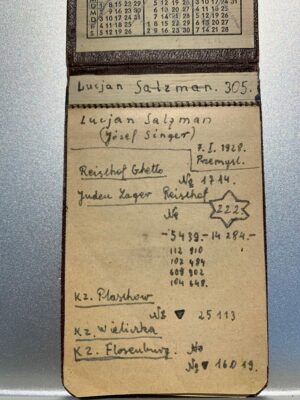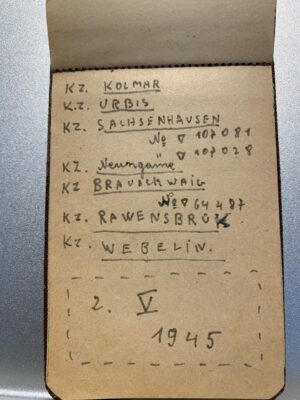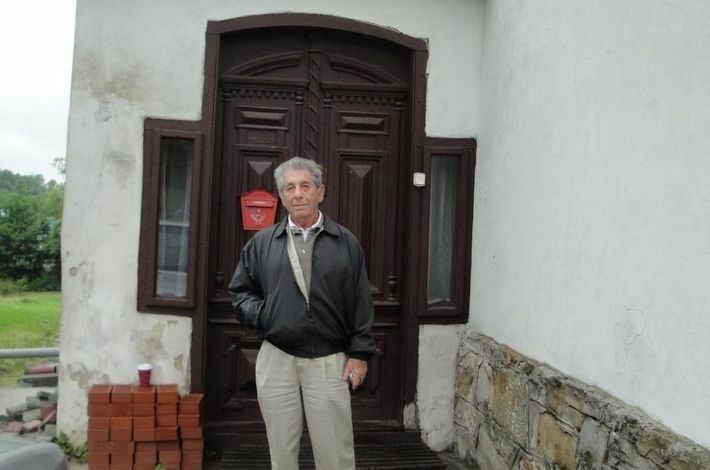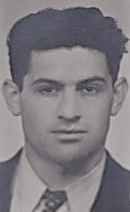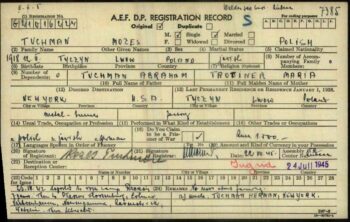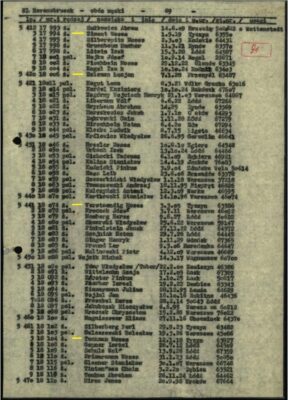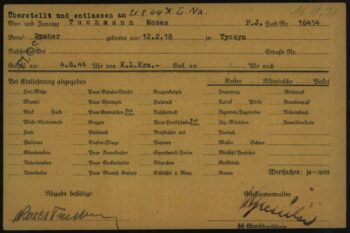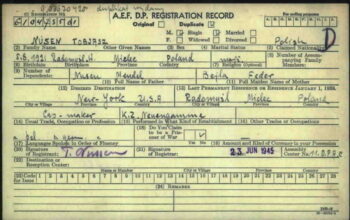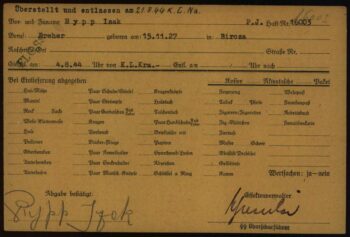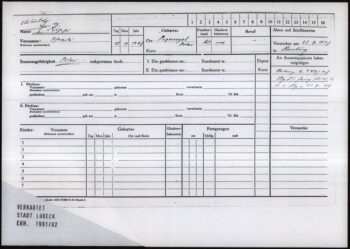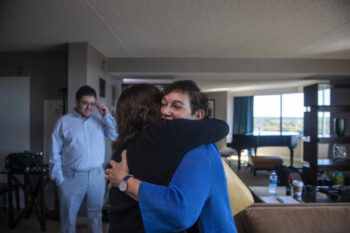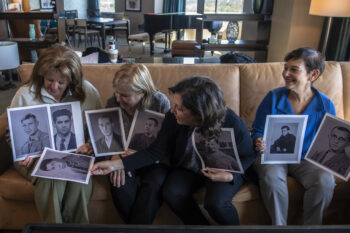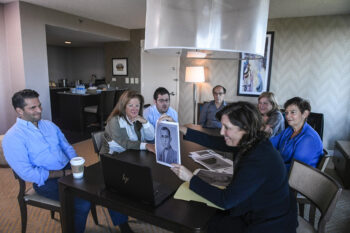I rarely spoke of the Holocaust or my life before the war. But children are curious, and they began to ask questions and demand answers. They claimed my past as part of their own and wanted to know about the grandparents and uncle whom they had never met.
George Salton in his book "The 23rd Psalm: A Holocaust Memoir"
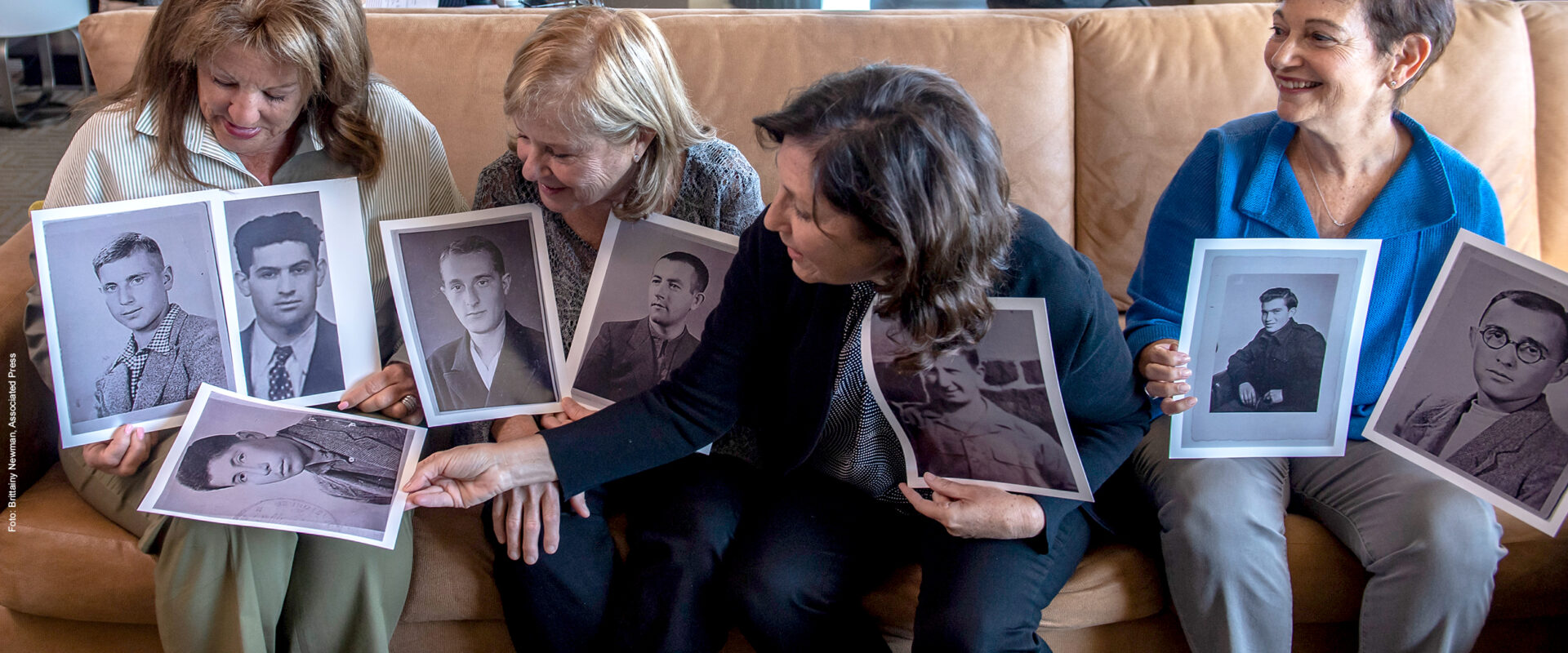
Mysterious
It was only later that she learned L. Salzman was in fact the original name of her father, George Salton, who created this painting in 1946 at the age of 18 while living in a displaced persons camp. The discovery of this picture was the first step in a journey by Anna to uncover the truth of her father’s Holocaust past.
Grandparents
Citation
George Salton – Lucjan Salzman
In 1942, a small group of around 450 young Jewish men were separated from the nearly 23,000 Jews in the ghetto as part of a forced labor group for Daimler-Benz that had taken over a factory in Rzeszów to manufacture small airplane engines. In the summer of 1942, the rest of the Jews in the ghetto were forced into boxcars and sent to be murdered in the Belzec extermination camp. Lucjan worked in the factory that was renamed Reichshof by the Germans, until Daimler Benz evacuated the factory in July of 1944 as the Soviets drove into Poland.
The factory would be dismantled and moved to France. The Jewish labor prisoners were transported first to the Płaszów concentration camp, then to Wieliczka and Flossenbürg before they arrived to the tunnel factory in Urbès, near Colmar, in August 1944. As the Americans swept across France, the factory was bombed and the SS moved the remaining prisoners back to Germany and through the camps of Sachsenhausen, Watenstedt, Braunschweig, Ravensbrück, and Wöbbelin, where they were liberated by American soldiers on May 2, 1945.
Citation
Some of the stronger prisoners helped or carried the weak and sick so that they too would see that this day had come...We embraced and cried together. We told each other that we had survived and that we should never have given up hope. This was our day of glory. I stood together with Julek Schipper, Motek Hoffstetter, Moishe Ziment, Mola Tuchman, and Moses Verstanding.
George Salton in his book "The 23rd Psalm: A Holocaust Memoir"
Notes
Inquiry at the Arolsen Archives
Fellow prisoners
Fellow prisoners
Looking at the faces in the photographs and knowing from the memoir that some of them had been with her father through the Holocaust, Anna felt compelled to search for this special group of survivors and their families. Moses Tuchman was mentioned in her father’s memoir. Anna searched the Arolsen Archives and found his name and date of birth on multiple camp lists, as well as his Flossenbürg document and a post-war card, which confirmed that this was the same person who was from her father’s hometown and had been his friend and fellow prisoner during the Holocaust. With the information from his post-war record, including the name of his uncle in New York, Anna was able to find the living relatives of Moses Tuchman and ultimately connect with his two daughters. Tobias Nussen’s photograph was in the displaced persons collection George had, but his name was not in the memoir. Using the Arolsen Archives, Anna found Nussen’s entry on several of the same camp lists and documents as her father and the other prisoners. In spite of variations of his birthdate on multiple records, Anna was able to match Nussen’s signature on the back of his photograph to that on his Flossenbürg card, thus confirming that this friend from the displaced persons camp had also survived the Holocaust at George’s side, as part of the labor group. This information proved vital in locating several of his living family members. Another photograph in the displaced persons collection belonged to Izok Rypp. He is mentioned in The 23rd Psalm: A Holocaust Memoir as one of the “good young men” George had been with in the concentration camps. In the Arolsen Archives, Anna found his name on multiple camp lists, usually just a few lines above her father’s name because of their proximity in the alphabet. The post-war registration card showed that he was the same age as Anna’s father, one of the youngest in the labor group. Anna was heartbroken to find that the Arolsen Archives also contained his death certificate. Izok Rypp died in a hospital in Hamburg, Germany on July 23, 1947, just a few months short of his twentieth birthday. Anna still searched but was unable to find any living relatives, and so the memory and history of this young Jewish prisoner is only preserved through the Arolsen Archives and the memoir of George Salton.
Documents
Citation
These were friends who would help me at every chance, whom I could trust to watch my shoes or bowl, and who would even lie to a Kapo or the SS to save my life.
George Salton in his book "The 23rd Psalm: A Holocaust Memoir"


